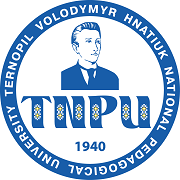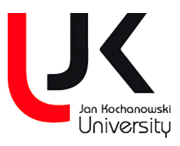RHETORIC AS THE ART OF PERSUASION: HISTORY, THEORY, MODERNITY
DOI:
https://doi.org/10.32782/2307-1222.2025-59-25Keywords:
rhetoric, oratory, communication skills, argumentation, educational technologiesAbstract
The article explores the essence of rhetoric as the art of persuasion through the lens of historical theory and modernity. It has been an essential element of public life, as the ability to express thoughts eloquently played a significant role in political debates, legal proceedings, and philosophical schools. With the development of modern technologies and the growing social demands for communication skills, rhetoric has become an important component of education in contemporary institutions. The study of rhetoric contributes to the development of cognitive and communication skills necessary for success in professional activities and social interaction. The article explores the main stages of the development of rhetoric, particularly its origins in antiquity, its further evolution in the Middle Ages, and its revival during the Renaissance. Special attention is given to modern teaching methods that include interactive technologies, enabling students to improve their oratory skills using multimedia tools and enhance their argumentative skills through role-playing and discussions.The primary focus of the article is the analysis of rhetorical techniques used to achieve effective communication and persuasion in various fields, such as politics, business, media, and academic communication. The main components of rhetoric are examined, including the rhetorical canon, its foundations, and stages that cover the creation, structuring, and delivery of speeches. The article also addresses issues related to oratory, conducting reasoned debates, conversations, as well as ethnorhetoric, which studies the peculiarities of speech in different cultural and ethnic contexts. The teaching of rhetoric in educational institutions requires consideration of modern technologies that not only improve public speaking skills but also enable mastery of new forms of rhetorical practices, such as media rhetoric and political rhetoric. These forms are becoming increasingly relevant in the context of the rapid development of social media and new forms of communication. Today, rhetoric is an important tool not only for developing speech and argumentative skills but also for shaping professional competence and an active civic position.
References
Мельничук О.Д. Константи досвіду невербального в англомовному художньому дискурсі : монографія. Рівне : Волин. обереги, 2023. 312 с.
Мельничук О.Д. Роль поетики як античної науки у формуванні сучасної теорії наративу. Актуальні питання гуманітарних наук : міжвузівський збірник наукових праць молодих вчених Дрогобицького державного педагогічного університету імені Івана Франка. ВД «Гельветика», 2023. № 64. T. 1. C. 310–316.
Ораторське мистецтво. Літературознавча енциклопедія : у 2 т. / авт.-уклад. Ю.І. Ковалів. Київ : ВЦ «Академія», 2007. Т. 2. С. 160–161.
Aristotle. Rhetoric / translated by G.A. Kennedy. Oxford : Oxford University Press, 2007.
de la Hera T. Persuasion through Digital Games: A Theoretical Model. Digital Gaming and the Advertising Landscape. Amsterdam University Press, 2019. P. 95–146. DOI: 10.2307/j.ctvnp0j4g.10.
Eyman D. Digital Rhetoric: Practice. Digital Rhetoric: Theory, Method, Practice. University of Michigan Press, 2015. P. 112–136. DOI: 10.2307/j.ctv65swm2.8.
Herrick J.A. The History and Theory of Rhetoric: An Introduction. London : Routledge, 2020.
Toulmin S. The Uses of Argument. Cambridge : Cambridge University Press, 2003.










